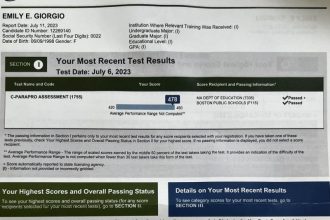A subrogation letter is a crucial document in insurance claims. It serves as a formal request from the insurance company to be reimbursed for a claim they have already paid out to their policyholder. These letters are essential in facilitating the recovery process and ensuring that the party responsible for the loss bears the financial burden. Understanding the purpose and significance of a subrogation letter can help policyholders navigate insurance claims more effectively. Let’s delve deeper into what exactly a subrogation letter entails and how it impacts insurance processes.
What is a Subrogation Letter?
Welcome, curious readers! Today, we are diving into the fascinating world of subrogation letters. Have you ever heard of such a thing? If not, don’t worry. By the end of this article, you’ll have a crystal-clear understanding of what a subrogation letter is and why it matters. So, grab a snack, get comfy, and let’s unravel the mystery together!
Understanding the Basics
Let’s start with the basics. What exactly is a subrogation letter? Well, imagine this – you’re driving your toy car when suddenly it crashes into a wall. Your friend, who lent you the toy car, ends up with a broken toy. Now, you feel responsible and want to make things right. A subrogation letter is a bit like that – it’s a formal letter sent by an insurance company to recover the costs they’ve paid out to cover damages or losses incurred by their policyholder.
But why does this process even exist? Think of it as a way for the insurance company to seek reimbursement for the money they’ve spent on your behalf. It’s like a superhero coming to the rescue and then asking for their cape back!
How Does It Work?
Now, you might be wondering how the whole subrogation letter thing actually works. Let’s break it down into simpler terms. Imagine you have a magical friend called Insurance Fairy. Whenever you have an accident or face a loss, Insurance Fairy swoops in to save the day and covers the costs. But wait, there’s a catch!
Once the dust settles and the chaos fades away, Insurance Fairy sends a subrogation letter to the party responsible for the accident or loss. This letter serves as a formal request for reimbursement of the funds that Insurance Fairy had to fork out on your behalf. It’s like a gentle reminder saying, “Hey, remember that time I helped you out? It’s time to pay me back now.”
The Importance of Subrogation Letters
Now, you might be thinking, “Why is this subrogation letter thing so important?” Well, imagine if Insurance Fairy didn’t have a way to recover the money they spent on your behalf. It would be like a bakery giving out free cupcakes all day – delightful for you but not sustainable in the long run!
Subrogation letters play a crucial role in helping insurance companies keep their costs in check. By recovering the money they’ve paid out, they can ensure that their resources are used efficiently and that they can continue to provide assistance to those in need. So, in a way, subrogation letters help maintain the balance in the insurance world.
Key Components of a Subrogation Letter
Let’s take a peek into what goes into a typical subrogation letter. Imagine it as a secret recipe that Insurance Fairy follows to get things done. Here are some key ingredients you’ll often find in a subrogation letter:
- Introduction: The letter starts by introducing the insurance company and detailing the nature of the claim.
- Explanation: It then explains why the insurance company believes the recipient is responsible for the damages or losses.
- Amount Due: The letter clearly states the amount of money that the insurance company is seeking to recover.
- Deadline: A deadline is usually provided for the recipient to respond or make the payment.
- Contact Information: The letter includes contact details in case the recipient has any questions or wishes to dispute the claim.
Responding to a Subrogation Letter
So, what should you do if you receive a subrogation letter? Don’t panic! It’s essential to handle the situation calmly and responsibly. Here are a few steps to guide you through the process:
- Read Carefully: Take the time to read the letter thoroughly and understand the details of the claim.
- Seek Clarification: If you have any questions or doubts, don’t hesitate to reach out to the insurance company for clarification.
- Evaluate Your Options: Assess your options carefully, whether you agree with the claim or wish to dispute it.
- Respond Promptly: It’s crucial to respond to the subrogation letter within the specified timeframe, even if it’s to request more time to gather information.
In Conclusion
And there you have it, dear readers – a closer look at the intriguing world of subrogation letters. Remember, these letters are not meant to cause stress or confusion but to ensure that everyone plays their part responsibly in the grand scheme of insurance. So, the next time you hear about a subrogation letter, you’ll know exactly what it’s all about. Until next time, stay curious and keep learning!
What is a Subrogation Letter From My Insurance Company for?
Frequently Asked Questions
What should be included in a subrogation letter?
A subrogation letter typically includes details such as the parties involved, the incident or claim information, the amount being claimed, and any relevant supporting documentation. It serves as a formal request to recover expenses paid out by an insurance company.
How is a subrogation letter used in insurance claims?
A subrogation letter is used to notify the responsible party or their insurance company that the claimant’s insurance provider has covered costs related to an incident caused by the responsible party. It seeks reimbursement for these expenses on behalf of the claimant.
What is the purpose of sending a subrogation letter?
The primary purpose of sending a subrogation letter is to recover costs incurred by an insurance company when they have paid out a claim that is the responsibility of another party. It aims to ensure that the responsible party or their insurer covers the expenses instead.
Final Thoughts
In conclusion, a subrogation letter is a formal document sent by an insurance company to a third party. It outlines the insurer’s intention to seek reimbursement for payments made on behalf of their insured. The letter details the claim information and requests cooperation in resolving the matter. Ultimately, a subrogation letter serves as a crucial tool for insurance companies to recover costs from responsible parties.






